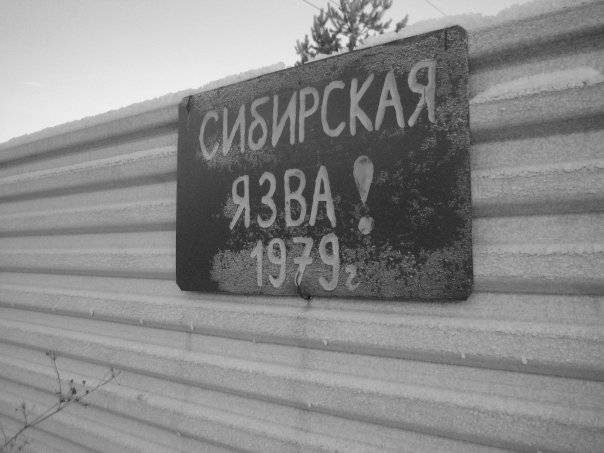In the spring of 1979, the city of Sverdlovsk, now known as Yekaterinburg, experienced a strange and deadly event that would baffle scientists and historians for years to come. This event, often referred to as the “Deadly Pollen Fall,” wasn’t actually about pollen but a mysterious and fatal anthrax outbreak. The story is a complex blend of tragedy, secrecy, and scientific intrigue that unfolded during the height of the Cold War.
A Mysterious Illness
It all began in April 1979 when residents of Sverdlovsk started falling ill with severe flu-like symptoms. What initially appeared to be a common seasonal illness quickly escalated into a full-blown health crisis. People were experiencing high fevers, difficulty breathing, and severe chest pains. Doctors were perplexed and overwhelmed as the number of patients soared, and soon, it became clear that this was no ordinary outbreak.
Within days, dozens of people had succumbed to the mysterious illness, and panic began to spread through the city. The Soviet authorities, known for their tight control over information, swiftly moved to contain the situation. Hospitals were placed under strict quarantine, and the public was kept in the dark about the true nature of the outbreak.

The Cover-Up Begins
In typical Cold War fashion, the Soviet government quickly concocted a cover story. They claimed the outbreak was due to contaminated meat from a local butcher shop. This explanation seemed plausible to some, but many found it hard to believe that tainted meat could cause such a widespread and deadly epidemic.
Behind the scenes, Soviet officials were scrambling to identify the true source of the outbreak. Samples were collected, and autopsies were performed, revealing a chilling discovery: the victims had died from inhalation anthrax, a rare and deadly form of the disease. This revelation was kept secret from the public, and the cover-up continued.

The True Cause: A Military Blunder
As more information slowly trickled out over the years, it became clear that the official story was far from the truth. The real cause of the outbreak was an accidental release of anthrax spores from a nearby military facility known as Compound 19, which was part of the Soviet Union’s extensive biological weapons program.
On the fateful day of April 2, 1979, technicians at Compound 19 removed a clogged filter from an exhaust system but failed to replace it. This oversight allowed anthrax spores to be released into the atmosphere, carried by the wind over a wide area of Sverdlovsk. People downwind of the facility, particularly those living in a narrow zone that stretched several kilometers, were exposed to the deadly spores.
The Path to Discovery
The truth about the Sverdlovsk anthrax outbreak remained hidden for more than a decade. It wasn’t until the collapse of the Soviet Union in the early 1990s that researchers gained access to more information. Dr. Matthew Meselson, a renowned biologist from Harvard University, played a pivotal role in uncovering the details of the incident.
In 1992, Russian President Boris Yeltsin, himself a former Communist Party official in Sverdlovsk, admitted that the outbreak was caused by an accidental release of anthrax spores from a military facility. This admission marked a significant turning point in the investigation.
Dr. Meselson and his team conducted thorough research, including interviews with survivors and analysis of medical records. They confirmed that the anthrax spores had indeed been released from Compound 19 and that the outbreak had nothing to do with contaminated meat. Their findings were published in a landmark paper in the journal Science in 1994, finally shedding light on the true cause of the deadly epidemic.
The Human Toll
The Sverdlovsk anthrax outbreak claimed the lives of at least 66 people, although some estimates suggest the number could be higher. The victims were predominantly men who worked in factories or other outdoor jobs, making them more likely to have inhaled the spores. The disease progressed rapidly, often resulting in death within days of the first symptoms.
Families of the victims were left devastated, grappling with the sudden loss of their loved ones and the lack of clear answers. The Soviet government’s secrecy and misinformation only added to their anguish. Many families were told that their relatives had died of pneumonia or other illnesses, and it wasn’t until years later that they learned the truth.

Lessons Learned
The Sverdlovsk anthrax outbreak serves as a sobering reminder of the dangers posed by biological weapons and the importance of transparency in public health crises. The incident highlighted the catastrophic potential of bioweapons, as well as the challenges in responding to and managing such outbreaks.
In the wake of the incident, there have been significant efforts to strengthen international regulations and agreements to prevent the proliferation of biological weapons. The Biological Weapons Convention, initially signed in 1972, has been reinforced with additional measures to enhance compliance and verification.
A Community’s Resilience
Despite the tragedy, the people of Sverdlovsk demonstrated remarkable resilience. The city has since grown and developed, becoming a vibrant, modern metropolis known as Yekaterinburg. The memory of the 1979 outbreak remains a part of the city’s history, serving as a testament to the community’s strength and endurance.
Memorials and commemorations for the victims have been established, ensuring that the lives lost are not forgotten. The incident has also sparked ongoing research into anthrax and other infectious diseases, contributing to a greater understanding of how to prevent and respond to similar outbreaks in the future.

